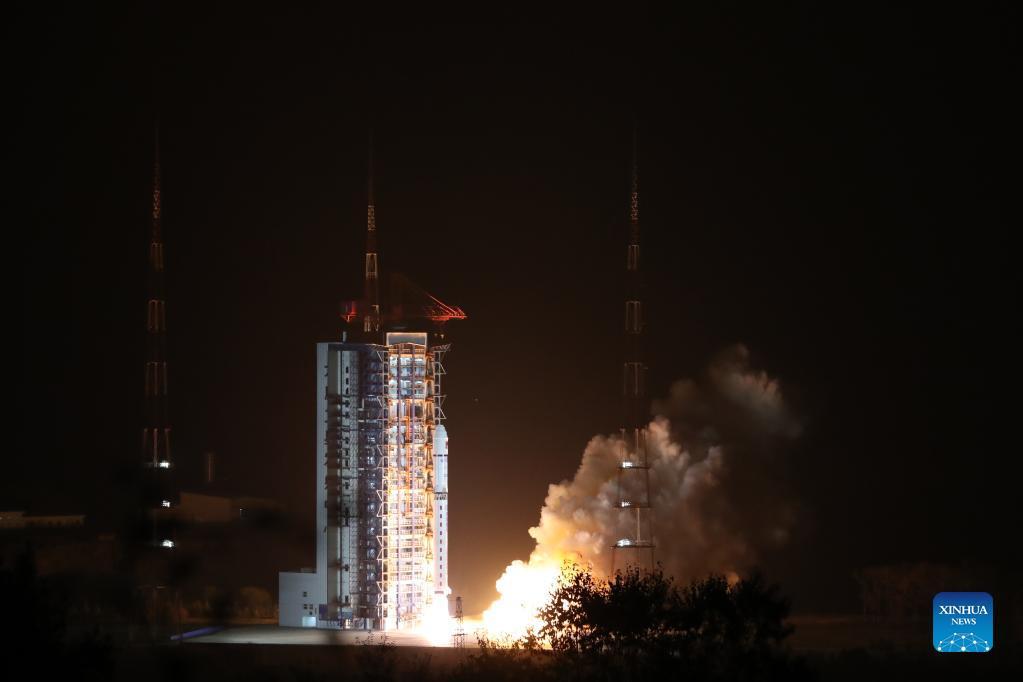15.10.2021

A Long March-2D rocket carrying China's first solar exploration satellite blasts off from the Taiyuan Satellite Launch Center in north China's Shanxi Province, Oct. 14, 2021. China sent its first solar exploration satellite into space from the Taiyuan Satellite Launch Center in north China's Shanxi Province at 6:51 p.m. Thursday (Beijing Time). The satellite was launched aboard a Long March-2D rocket and entered its planned orbit successfully. Ten small satellites including an orbital atmospheric density detection experimental satellite and a commercial meteorological detection constellation experimental satellite were also sent into space using the same carrier rocket. It was the 391st flight mission of the Long March carrier rocket series. (Photo by Zheng Bin/Xinhua)
China sent its first solar exploration satellite into space from the Taiyuan Satellite Launch Center in north China's Shanxi Province at 6:51 p.m. Thursday (Beijing Time).
The satellite was launched aboard a Long March-2D rocket and entered its planned orbit successfully, said the China National Space Administration (CNSA).
The satellite, which will conduct the first space exploration of solar Hα spectral imaging, is expected to improve China's research ability in solar exploration.
The satellite will operate in a sun-synchronous orbit at an altitude of 517 km, with a solar space telescope as its primary scientific payload. It will help researchers observe changes in the Sun during solar flares, such as changes in its atmospheric temperature and velocity.
The satellite's design includes the separation of its platform cabin and payload cabin, thus ensuring the ultra-high pointing accuracy and stability of the payload.
Solicited from the public, the name of the satellite, Xihe, is the goddess of the sun who created the calendar in ancient Chinese mythology.
Also onboard the rocket were 10 small satellites, including an orbital atmospheric density detection experimental satellite and a commercial meteorological detection constellation experimental satellite.
It was the 391st flight mission of the Long March carrier rocket series. Enditem
Quelle: Xinhua

